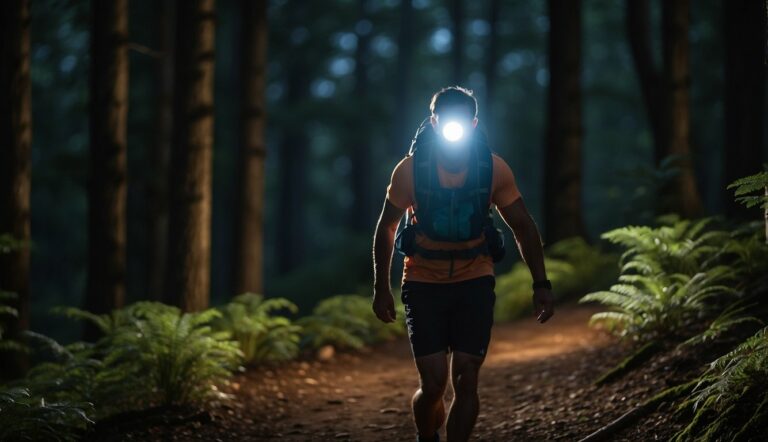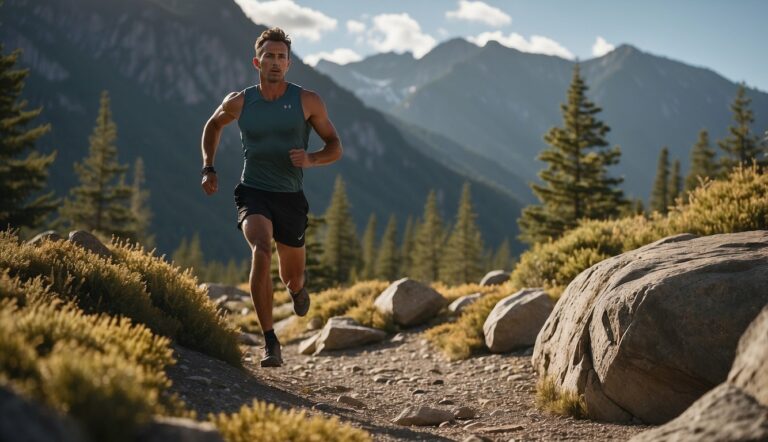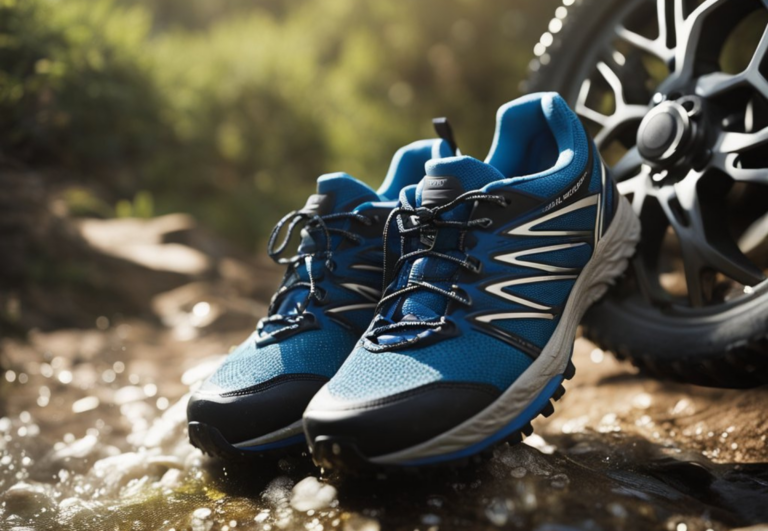Wildlife Encounters: Safety Tips for Trail Runners Facing Nature’s Unpredictables
As an experienced trail runner and a UESCA certified running coach, I’ve had my fair share of encounters with wildlife on the trail. Recognizing the importance of safety during these encounters, I’ve gathered a set of practical tips to help my fellow runners navigate trail outings with confidence. Safety is paramount, and understanding how to act when coming across wild animals is crucial for every trail runner.
When running through natural habitats, it is important to be vigilant and maintain awareness of one’s surroundings. Noises such as conversation or bear bells can alert animals to your presence, often causing them to move away. However, it is essential to understand the behavior of different wildlife species you might encounter, as the approach to deterring a bear, for instance, differs from how you should handle a snake sighting.
Carrying protective equipment like bear spray, knowing when to make yourself look larger, and when to slowly back away, are skills every trail runner should possess. Researching local wildlife, looking out for warning signs, and never approaching or feeding animals are additional steps that help ensure a safe and enjoyable trail running experience. My goal is to equip trail runners with the information they need to stay safe while enjoying the great outdoors.

Wildlife Behavior on the Trails
When trail running, it’s crucial to recognize the typical behaviors of wildlife you may encounter. By understanding their habits, you can better ensure both your safety and the well-being of the animals.
Territorial Habits of Animals
Animals like deer, elk, and coyotes are known to be territorial, especially during certain times of the year or when they are raising their young. Being aware of your surroundings and maintaining a respectful distance is vital.
- Deer and Elk: May become aggressive if they perceive a threat to their space.
- Coyotes and Wolves: Are less likely to confront humans but can be protective of their territory. Avoid areas that look like dens or are marked with excessive tracks.
Breeding Season Considerations
During breeding seasons, animals can be unpredictable. Male species often become aggressive as they compete for mates.
- Bears and Moose: Both can become more territorial and prone to confrontation.
- Snakes: Be extra cautious as they might be more active and defensive.
I make it a point to check for local wildlife mating seasons before my runs.
Mother and Her Cubs: Special Precautions
Never come between a mother and her offspring. This is a golden rule in wildlife safety. Mothers, especially bears, are incredibly protective and will perceive any close presence as a threat to their cubs.
- Bears: If you see a bear cub, chances are the mother is close by, retreat slowly.
- Bobcats and Deer: Similarly, avoid approaching young animals; human interference is often mistaken for predation.
Awareness is key. Remember, my role as a trail runner is to coexist respectfully with wildlife, ensuring their habitat remains undisturbed by my presence.
Safety Measures and Encounter Prevention for Trail Runners
When I’m coaching trail runners, the primary focus always includes being prepared and preventing unexpected wildlife encounters. The following measures are both practical and effective in ensuring safety on the trails.
Making Enough Noise to Avoid Surprises
Noise is your first line of defense in the wilderness. It alerts animals to your presence, giving them time to move away. Here are key strategies I advise:
- Talk or sing: Particularly near blind corners or dense vegetation.
- Clapping hands: Do this periodically, or attach a noise-making device to your clothing.
Using Bear Spray and Other Protection Tools
Carrying bear spray is a crucial safety precaution in bear-inhabited areas, and it can be effective against other wildlife too.
- Accessibility: Keep the spray within easy reach, not buried in your pack.
- Training: Practice using inert bear spray to ensure you’re prepared.
Staying on Marked Trails for Safety
Adhering to marked trails is a common-sense practice. Not only does it protect local flora and fauna, but it also keeps you in safer, more predictable territories where wildlife encounters are less likely.
- Plan your route: Stick to it unless conditions or official advisories suggest otherwise.
- Stay alert: Always be aware of your surroundings, watching and listening for signs of animals.
Reacting to Encounters as a Trail Runner

When out on the trails, knowing how to react to wildlife encounters can keep both you and the animals safe. It’s critical to remain composed, assess each situation, and act based on the type of wildlife you meet.
How to Remain Calm and Assess the Situation
I always advise fellow runners to keep their cool when they stumble upon wildlife. Panic can lead to hasty decisions that escalate the encounter. Quick tips are:
- Pause and observe: Look for warning signs such as agitated movement or noise from the animal.
- Ready a slow retreat: Back away without turning your back on the animal, creating more distance.
What to Do When Encountering Predatory Wildlife
In cases where you encounter a predator like a mountain lion or bear, your reaction can be crucial.
- Moose and Mountain Lions: Make yourself seem larger and maintain eye contact. Don’t run, as this can trigger a chase.
- Bears: Talk in a calm voice and slowly back away. If a bear approaches, stand your ground.
| Species | Approach | Retreat |
|---|---|---|
| Moose | Make yourself large, speak firmly | Back away, find cover |
| Mountain Lion | Raise arms, throw objects if aggressive | Slowly back up, do not run |
| Black Bear | Make noise, don’t play dead | Slow retreat, don’t climb |
| Grizzly Bear | Remain still, play dead if attacked | Don’t run, avoid eye contact |
Specific Actions to Take for Bears, Snakes, and Others
Specific actions can differ with each animal. For example:
- Bears: If a black bear attacks, fight back aggressively. With grizzlies, playing dead can sometimes discourage them from persisting.
- Snakes: Avoid sudden movements. Slowly move away from the snake, giving it room to escape.
In any wildlife encounter, keep a safe distance and never attempt to approach or feed the animal. Remember, I always carry a whistle and a first aid kit among my essentials for additional safety on the trails.
Dealing with Injuries and Seeking Help
In the event of an encounter with wildlife that results in injury, knowing the basics of first aid and when to seek emergency medical attention is crucial. I’ll guide you through the immediate steps to take post-injury and the importance of a timely medical response.
Basic First Aid for Wildlife Injuries
If you or a fellow runner are injured by wildlife, remain calm and perform these first aid steps:
- Stop the Bleeding: Apply direct pressure with a clean cloth to any wounds to control bleeding.
- Clean the Wound: Gently clean the injury with water to remove debris. Avoid using soap that can irritate the wound.
- Dress the Wound: Use sterile dressings or bandages to protect the injury from infection.
- Immobilize if Necessary: If a bone is broken or a joint is injured, immobilize the area to prevent further damage.
- Monitor for Shock: Keep the injured person lying down and elevate the legs if possible. Cover them with a blanket to maintain body heat.
When and How to Seek Medical Attention
After administering basic first aid:
- Use a Personal Locator Beacon (PLB): If you’re in a remote area without cell service, activate a PLB to alert emergency services.
- Assess the Injury: Determine the severity. If there’s uncontrolled bleeding, breathing difficulties, loss of consciousness, or severe pain, it’s time to seek immediate medical attention.
- Contact Emergency Services: If you have cell reception, call local emergency services or the park ranger station. Provide them with specific details about the injury and location.
- Evacuate if Necessary: If the injury is not life-threatening but requires a doctor’s attention, evacuate carefully by walking to the nearest trailhead or wait for help if movement exacerbates the injury.
By knowing these first aid fundamentals and understanding when to call for help, you can save lives and prevent injuries from worsening.
Best Practices for Wildlife Safety

As a UESCA certified running coach with extensive experience on the trails, I’m often asked about how to stay safe when encountering wildlife. Here are some essential tips for trail runners venturing into remote or backcountry areas.
Make Your Presence Known
Wild animals are often startled by sudden encounters with humans. To avoid surprising them:
- Speak or Sing: Regularly make noise, especially when approaching blind corners.
- Clap Hands: A simple method to alert animals.
Stay Alert
While enjoying the serenity of the trail, keep these pointers in mind:
- Remove Headphones: Stay aware of your environment and listen for signs of wildlife.
- Scan Ahead: Look for animal signs or movements.
Research and Prepare
Understand the risks of the area you plan to run in:
- Learn About Local Wildlife: Identify potential dangerous wildlife and their behaviors.
- Check Weather Conditions: Bad weather can influence animal behavior and your visibility.
Act Safely During Encounters
In the event that you come across wildlife:
- Do Not Run: Running can trigger a predator’s chase instinct.
- Face the Animal: Back away slowly while facing the animal, making yourself appear larger.
Travel in Groups
There is safety in numbers:
- Groups: Try to run with a partner or in a group.
Leave No Trace
Respect wildlife and their habitats:
- Pack It In, Pack It Out: Keep the trail clean to not attract animals with food waste.
Carry Protection
As a last resort, carry bear spray or a whistle for emergencies.
| Precautions | Description |
|---|---|
| Noise Making | Prevent surprise encounters |
| Alertness | Be aware of surroundings |
| Research | Know the wildlife and weather |
| Safe Encounter Behaviors | Don’t run, face the animal |
Above all, respect wildlife, stay vigilant, and enjoy the run safely.






